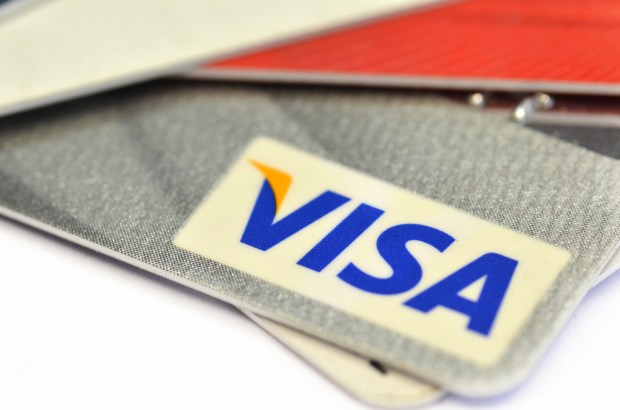Visa Q1 Where It Wanted To Be On Holiday, eCommerce Spend

Visa’s fiscal Q1 topped the Street on the top line as consumers spent (and spent) during the holiday season. And they did so, notably, online. Cross border volumes were up nicely, as well, as management eyes opportunities in Europe and India.
Like its rival, Mastercard, Visa has announced results for its first fiscal quarter — which ended in December 2017 — that topped expectations, once tax impacts from recently passed legislation are factored out.
The bottom line was $1.08 a share, which topped the Street by nine pennies. Revenue was $4.9 billion, slightly above expectations.
Within that top line, payment volumes were up 10 percent to $1.9 trillion, as measured on a constant dollar basis — up on both consumer credit and higher holiday spending, with the U.S. comprising approximately 43 percent of that tally. Growth came from better performance in retail and entertainment like movies and gaming.
CEO Alfred Kelly noted both online and offline spending had higher growth rates than had been seen in the prior year, with online “growing approximately four times faster than offline.” eCommerce accounted for more than 30 percent of U.S. consumer volume during the holiday season, and retail spend was strong early on as well.
The Middle East and Central Europe regions led worldwide growth, up 19 percent. Latin America was up 14 percent, driven by Argentina. Canada grew 11 percent.
Total processed transactions were up 12 percent to 30.5 billion, and debit and credit transactions were up as well. Pointing to a particular area of strength, Kelly noted that in India, tapping the demonetization efforts in that country, total processed transactions continued to grow and were up 12 percent, with 3 million points of acceptance (merchants) for Visa products.
Cross-border volumes were up 9 percent, and whole revenue growth was up 12 percent, with Europe performing better than the company expected, even amid Brexit concerns. Weak dollar trends meant inbound spend into the U.S. was also relatively strong.
Kelly said on the call that “significant investments” lie ahead, including allocations to digital initiatives. Among those would be biometrics cards that utilize fingerprint IDs as an alternative to signatures — a technology field which is currently in commercial pilot. He recounted digitally focused deals like that with Facebook in October, when the social media giant joined Visa’s digital enablement program to accelerate payment services in the Facebook platform through tokens.
Visa Direct, launched in December of last year, also remains a key product across Europe.
Overall themes for investments moving forward will include contactless payments and authentication methods, which Kelly said are part of a “natural evolution” following the adoption of EMV infrastructure.
Integration efforts surrounding Visa Europe proceed apace, he added, telling analysts Visa has “largely built out [its] leadership team” and that the firm maintains a strong position in the U.K., France and Spain, but there “are 34 other markets as we establish [them]. We are in the midst of staffing up in a number of markets,” with a goal of “less people in the regional hub in London and more people out in the market where the action is,” as Visa Direct and Visa token services make inroads there. Attractive markets include Germany, where the largest competitor to Visa is cash, Kelly said.
In his own comments during the conference call with analysts, CFO Vasant Prabhu said incentives of 21.4 percent are at the lower end of the outlook from the company, up 2.5 percent from last year as European contract conversions and renewals during the second half of the year gained ground.
During the question and answer session, in response to the fact that U.S. debit transaction growth was around 8 percent, Kelly noted that “debit, as well as credit, looked good in the holiday season.”
He also commented on concerns about no longer requiring signatures at checkout, responded to questioning that “the vast majority” of transactions in the U.S. do not require a signature anyway, particularly those under certain dollar thresholds.
“We actually think we need to encourage the adoption of EMV for security reasons,” Kelly said. Yet, for high-ticket items, consumers and merchants want to be able to validate those transactions with a signature.
Looking ahead, the company boosted its operating expense forecast, guiding to the high end of the mid-single digit range. Growth had previously been projected to be in the mid-single digits. Net revenue growth forecasts were maintained as well, remaining in high single-digit percentage growth.
